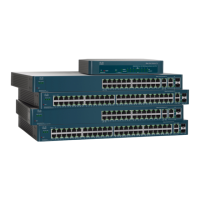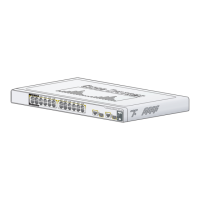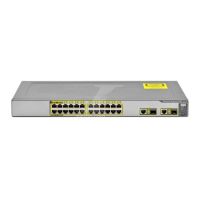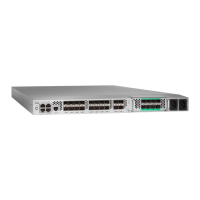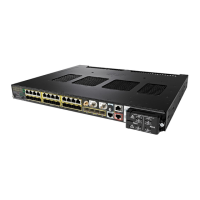VLAN Management
Private VLAN Settings
269 Cisco 500 Series Stackable Managed Switch Administration Guide
14
- Excluded—The interface is currently not a member of the VLAN. This is
the default for all the ports and LAGs. The port can join the VLAN through
GVRP registration.
- Tagged—Select whether the port is tagged. This is not relevant for
Access ports.
- Untagged—Select whether port is untagged. This is not relevant for
Access ports.
- Multicast TV VLAN—The interface used for Digital TV using Multicast IP.
The port joins the VLAN with a VLAN tag of Multicast TV VLAN. See
Access Port Multicast TV VLAN for more information.
- PVID—Port PVID is set to this VLAN. If the interface is in access mode or
trunk mode, the device automatically makes the interface an untagged
member of the VLAN. If the interface is in general mode, you must
manually configure VLAN membership.
STEP 5 Click Apply. The settings are modified and written to the Running Configuration
file.
To see the administrative and operational VLANs on an interface, click Details.
Private VLAN Settings
The Private VLAN Settings page displays the private VLANs that have been
defined.
To create a new private VLAN:
STEP 1 Click VLAN Management > Private VLAN Settings.
STEP 2 Click the Add button.
STEP 3 Enter the values for the following fields:
• Primary VLAN ID—Select a VLAN to be defined as the primary VLAN in the
private VLAN. The primary VLAN is used to allow Layer 2 connectivity from
promiscuous ports to isolated ports and to community ports.
• Isolated VLAN ID—An isolated VLAN is used to allow isolated ports to send
traffic to the primary VLAN.
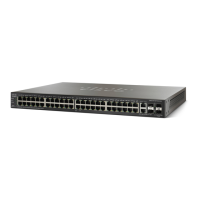
